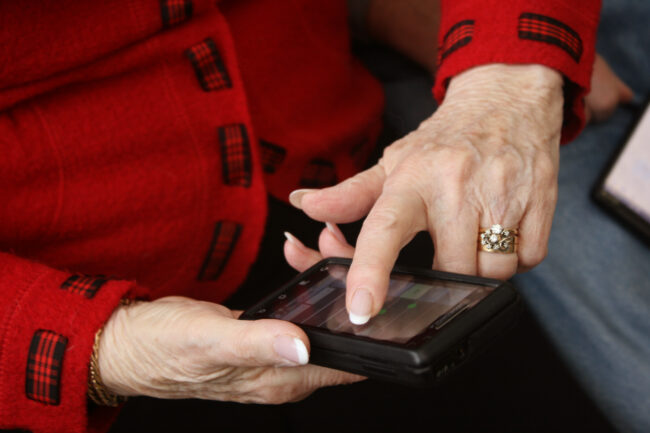Fun. Intelligent. Unbelievably pretty. Most importantly, young. That’s the image that most mobile phone adverts portray of their users. Unsurprisingly, that’s hardly representative of the truth.
Smartphone usage is already high amongst middle-aged and older users, and this is only likely to increase. As phones become more integrated into our work, and as the workforce ages, we’ll need to make sure phone interfaces remain accessible to everyone. Touch-screen keyboards designed for bright eyes and nimble fingers may not be quite as appropriate as people’s eyesight, memory and motor control begin to decline.
Researchers at Strathclyde University have begun investigating alternative input mechanisms for older users. Contrary to what many might expect, their findings suggest that, for once, it’s youths who are stuck in their ways. Older users actually appear more likely than younger ones to be willing to experiment with alternative keyboards. Prototypes so far include keyboards that fit larger keys in the same overall space, using motions such as shaking the phone to change which keys are displayed.
While the older users have not been faster with the new keyboard, they do appear to be more accurate.
Now, let’s just hope we can do the same for those adverts.

